Everyone can understand the sheer panic of an open water swim.
Even my multi-Ironman coach says the mass start in an Ironman is enough to make him want to crawl out of the water. And he’s been at it for over a decade.
Suffice it to say that everyone has experienced the fear of the open water, at some point in their triathlete life.
[Well, maybe not everyone. But I have discussed before that 10% of triathletes are actually aliens. If you have never been afraid of the open water, not even once, you are an alien. Period. In most races, 90% of the people standing on the shore at the beginning of the race will have a pain somewhere on their bodies, a doubt in their heads, and a fluttering in their stomachs. The other 10% (who feel awesome) are actually aliens. See how this works?]
Are you terrified of the swim start? The open water practice? Swimming, in general?
You are not an alien. You are normal.
The worse part about open water—is the first handful of times you experience it. Of course, the fears and terrors may continue to plague you… over and over… until you decide, “This triathlon thing is for aliens. Duh. Peace out, sistahs.”
The best part about open water — the fear is surmountable!
I may have had the worse panic attack in the history of open water swims. Coach Monster says I aged him ten years on that day back in April of 2011. You can read the tale here. Any of you who have been around Swim Bike Mom for awhile know the story. But it was very terrifying, very real and very humbling.
And the amazing thing? I’m completely, 100% happy to swim in open water now. Even very cold water …in a wetsuit …for 2.4 miles …with 2,500 of my closest triathlete friends …some who like to punch, kick and hit.
But that wasn’t always the case.
Here’s some of the best advice and observations and tips I have about open water swimming, the dreaded wetsuit, and getting your mind in the right place. My book also has a very powerful chapter about swimming and fears. Check out the Digital Edition by clicking on NEWBIES on the sidebar.
Oh, and by the way, the triathlon lingo for Open Water Swim is “OWS” …be in the cool club and use it anytime your write about it.
1) Know how to swim.
This may seem like a no brainer. But while 10% of all triathletes are aliens, about 25% of triathletes have no brains. The other 65% are just insane. So you see, we are all hosed. Just kidding. Sort of.
Be very comfortable swimming in the pool before you attempt to get in the lake, ocean, bay, pond, river or septic tank near you. You should be able to swim a decent distance, continuously, before attempting open water. I would say at least 400-500 meters (16-20 lengths in a pool).
Why?
Well, because in the open water, there are no walls, or sides, or resting places.
So you need to feel confident that you can swim the distance without needing to stop.
Also, learn to bilateral breathe in the pool (breathing on both sides). This is especially helpful in the open water because sometimes, you might be breathing on the side with the sun or the waves… and you might want to switch it up.
2) That being said…
I encourage every beginner, on their first OWS, to swim parallel to the shore, at a depth where she can stand up and rest, if needed. Don’t just swim straight out to the big cruise ship anchored a mile away. Take your time, find a spot about chest-deep, and swim along the shoreline.
If you feel nervous, just stand up. Compose yourself, catch your breath, say “I can do this,” and get back to it.
If you know that you can swim 400-500 meters continuously and you swim parallel to the shore for your first time, you will have a much better experience.
3) Practice in the open water at least 5 times before your first race.
I receive messages from women who write, “My first OWS will be this weekend…” And then I hold my breath because the next few words make me craaaaazy. “…in my first triathlon.”
Arrrrghhhh. Ladies! No! Do not get in the open water for the first time in your first race. That is insane! You are setting yourself up for failure, for danger and for a terrible experience. [Of course, the aliens discussed above, may disagree.]
Practice at least 5 times before your first race.
I had swam in the open water only three times before my first race with an ocean swim. I was a very strong pool swimmer (putting down 2000-2500 meters, 2-3 times a week). But three times in the open water was not enough before my first race. Five times would have been great. 100 times would have been better.
Do not swim alone. Have a swim buddy go with you, preferably someone who has experience in the open water. If not, then both of you definitely stay where you can touch the bottom.
This is often my buddy. (He’s wearing my wetsuit here).
Having a few open water experiences pre-race teaches you a few things:
– What are your open water weaknesses?
– How strong mentally do you really need to be? In other words, are you reasonably comfortable in the water and you can say, “Go get ’em tiger” and be okay? Or are you going to need some serious affirmations, daily-Stuart Smalley style, to make race day happen?
– How does your wetsuit feel? (if applicable) Do you have enough lube in the right places? (discussed below) How do your goggles fit, etc.
4) Sighting.
Sighting is the process whereby you peek your head out of the water to see where you are going in the open water. Because there are no lines on the bottom of the lake to follow, you have to pick a focus point (outside of the water, in the distance) and check to make sure you are swimming towards that at all times. The focus point will, obviously, change as you progress towards it. Usually you can use buoys for the race course as a point to sight, but it’s important to become flexible with sighting points so you can adapt on race day.
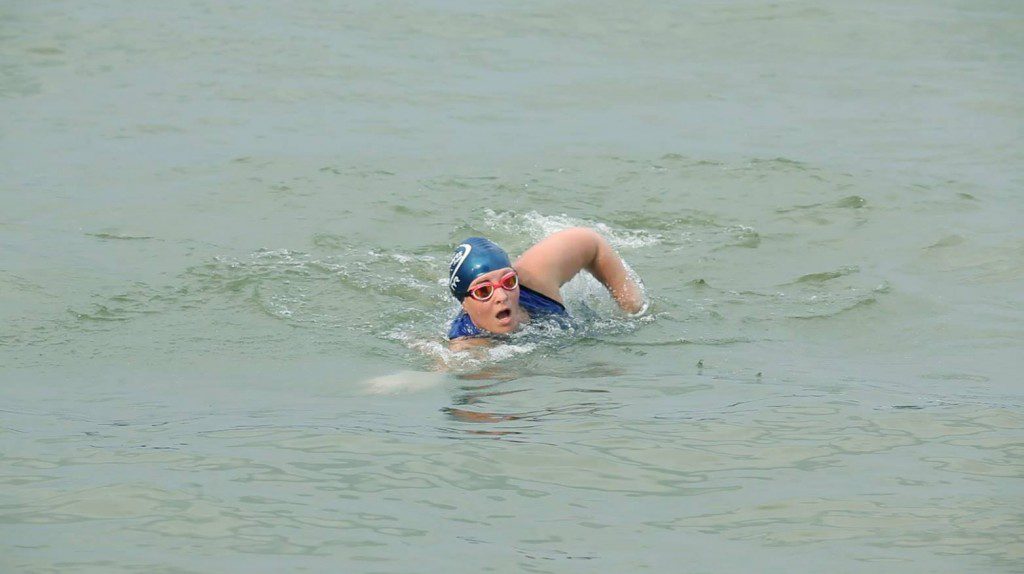

You can waste a ton of energy and time swimming off course from failing to sight. And lifting your head too far out of the water. Trust me, I know.
You can practice sighting in the pool with swimming with your eyes closed for some strokes, then lifting your head to sight, as described here in a good article on sighting.
5) Wear your planned race attire during your OWS practices
It goes without saying that you should wear your wetsuit to practice if your race will require a wetsuit. (Note: not all races are “wetsuit legal” – check with your race director, the triathlon clubs and athletes in your area and inquire. Not all wetsuits are USAT legal. Go here to read more about the USAT rules about wetsuits.)
I will discuss wetsuits below, but what goes under your wetsuit… or what you swim in without a wetsuit is important, too.
Living in Georgia, our waters are pretty much warm after mid-May. Therefore, most races in Georgia after May are not wetsuit “legal.” Therefore, I practice swimming in my triathlon suit that I will wear the entire race, or a swimsuit. Go here to read about what to wear on race day.
Practicing in your race day gear is important because it will tell you many things: Is the suit a good fit? Does it ride up in the front, the legs? Do I like the fit? Do I have “hot spots” that are chafing?
You will know well in advance of your race if you need to correct these issues, and you’ll have plenty of time to do so.
6) Lube it up.
If you are wearing a wetsuit, the lube is particularly important. (See video below).
But the same goes for standard tri clothing. You have a lot of skin-on-skin contact going on during a swim. Put some TriSlide, Body Glide, or Aquaphor around your bra straps, armpits, neck and shoulders before you swim.
You can find Aquaphor anywhere, and TriSlide and Body Glide on Amazon.com or at All3Sports.com (use discount code “SBMALL3” for 15% off your first purchase).
7) The Wetsuit
Wetsuit shopping is hilarious. Here’s a link to my first post about my first wetsuit. What a fiasco.
The best thing to do is get fitted for a wetsuit. Find a local triathlon store and make an appointment. They’ll put you in a decent entry level wetsuit, tell you how to put it on, and more.
I have worn an Orca S4 this season and was pleased with it. I hate the brand Orca for the sake of me being a larger gal… but they make a good suit that is generous in sizing. I wear a Men’s 8 or 9. The Expert wears a Men’s 10. Xterra makes a good suit too – I have worn a Men’s L in their sleeveless entry level. I have a Blue Seventy that’s on its way to me, but I can’t speak to these yet.
Either way, you’ll want to get fitted.
The next trick is actually putting on the wetsuit. Again, the folks at the store can help you with this, but here’s a decent video about putting on a wetsuit. [And he’s not exaggerating with the amount of lube spray].
*Be sure that you pull the wetsuit UP as high as you can before putting your arms in (think: panty hose… get it up high in the crotch!). It will make the pressure on your shoulders and chest much less, and ensure that you have enough suit for your shoulders and arms to move comfortably.
Sleeveless or full-sleeve?
Whether to purchase a full-sleeve or sleeveless depends on your race goals, your comfort level and the water temps. If you will be swimming long distances in cold water (below 65 degrees) over long-run, go ahead and get the full-sleeved one.
If the pressure from the suit scares you or your water temps are warmer (over 65 degrees) a sleeveless option will relieve some of the claustrophobic feelings and keep you warm enough. 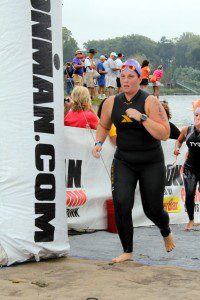

If you are rich and money is no option, buy one of each.
If you are thinking of renting/borrower a wetsuit for race day, just make sure that you find a similar one to practice in.
If you are looking for some used, or older wetsuits, check out SwimBikeSell.com — we have many in stock for low prices.
8) Cold water willies.
Ease into the cold water. Don’t jump in like a crazy person and try to swim right away for your first time. It will shock the system.
Instead, wade in up to your knees, acclimate. Then your hips, acclimate. And so on. When it comes to your face, put your face in the water and out a few times. Once you have spent 3-5 minutes acclimating, then begin to take a few strokes parallel to the shore. The cold water is often shocking and you want to take your time.
Not only is swimming in chilly water full of challenges itself, but the wearing of the wetsuit is a mess. Be prepared for a pressure on your shoulders and chest. Mentally acknowledge that it will feel different, and appreciate the wetsuit for: keeping you warm, and being a lovely added bit of floatation.
9) How to do it.
Some practical, yet obvious tips, I have go something like this:
– Put your wetsuit on at your car and have your buddy help zip you up. Don’t try and put the wetsuit on while you are on sand. It’s a mess. Have a small bottle of water to rinse your feet afterwards. Coach Monster is prepared enough to bring WARM water, which is wonderful when it’s 50 degrees out and the water is 58.
– Don’t worry about what you look like. Seriously. Very few people actually look good in a wetsuit.
– Wear your flip-flops down to the water’s edge.
– Hide your car key in a towel or baggie, or have someone watch your stuff. Put on your cap and goggles on the shore, or as you get into the water.
– Once in the water, swim as you normally would in a pool, only with sighting. You should sight at least every 5-8 strokes, to keep you on the right course.
– Breathe on the side that is most comfortable for you (or both sides, if the water is calm), switching up if the water is choppy or the sun is to one side.
– Make sure that you EXHALE all your air under the water – this will keep your breathing regulated. Failing to breathe out can start the cycle of panic, so keep your breathing as calm as you can.
– Keep your safety in mind at all times. If you are freaked out, then stop. Regroup. Safety first, always.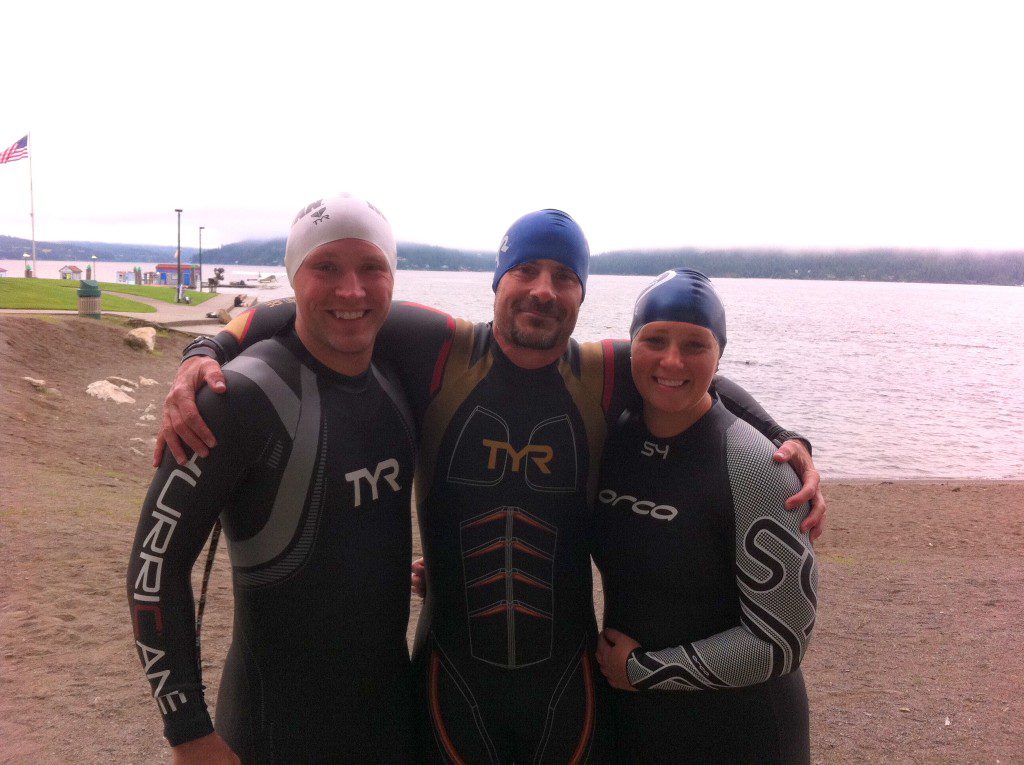

10) Simulate the swim start.
After you have been in the OW a few times, take 5-10 of your buddies down to the lake and start at the same time and swim close together to simulate the crowd of a swim start. It’s fun and silly, and will also give you the idea of someone bumping up against you.
At the start of your race, if you are particularly concerned about the crowd in the water, just wait a minute or two for the crowd to dissipate, and then enter the water. The comfort will be worth the few minutes.
11) Use your mind as your strongest weapon.
Finally, the best thing you can do besides practice your OWS is to prepare your mind for it.
Keep your thoughts positive. Don’t even utter the words “panic” or “fear” or “I can’t.” Say “I can do this” in your head—every day. Every morning and night and every swim.
Prepare mentally during your swims in the pool with continuous swim workouts. Don’t let the OWS fear paralyze you. If you have a bad experience, get back out there. Practice more often and slay the fear dragon.
You can do this!

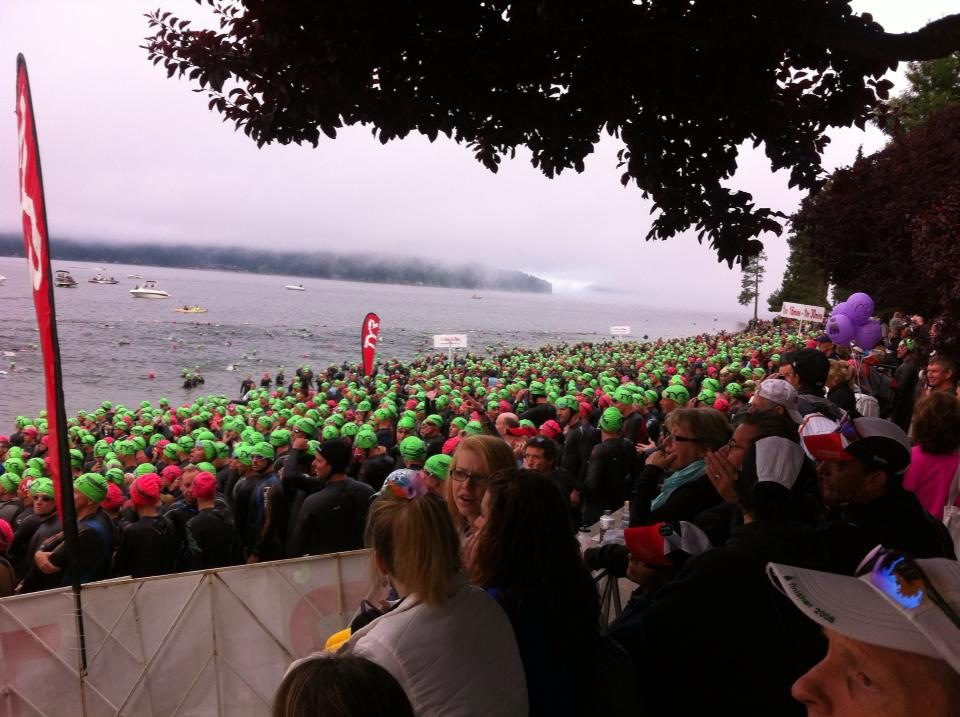
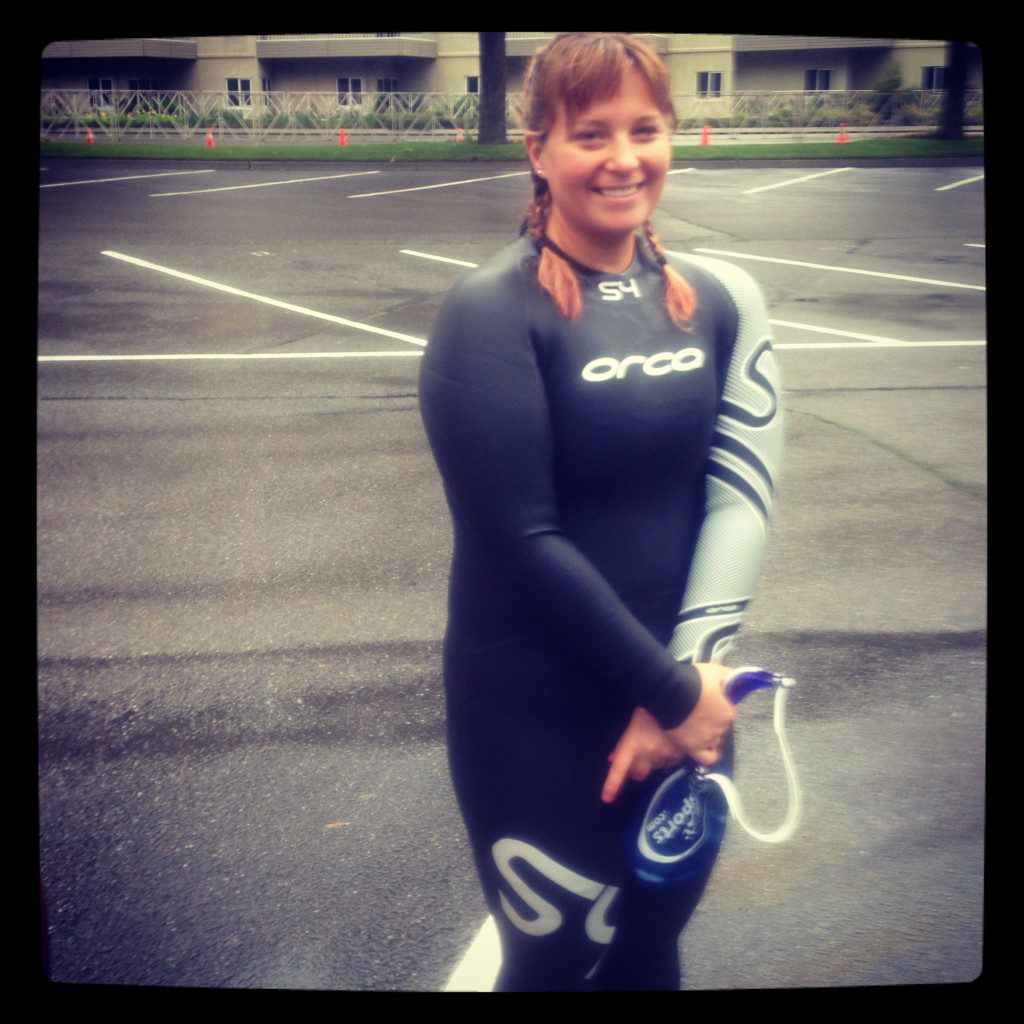


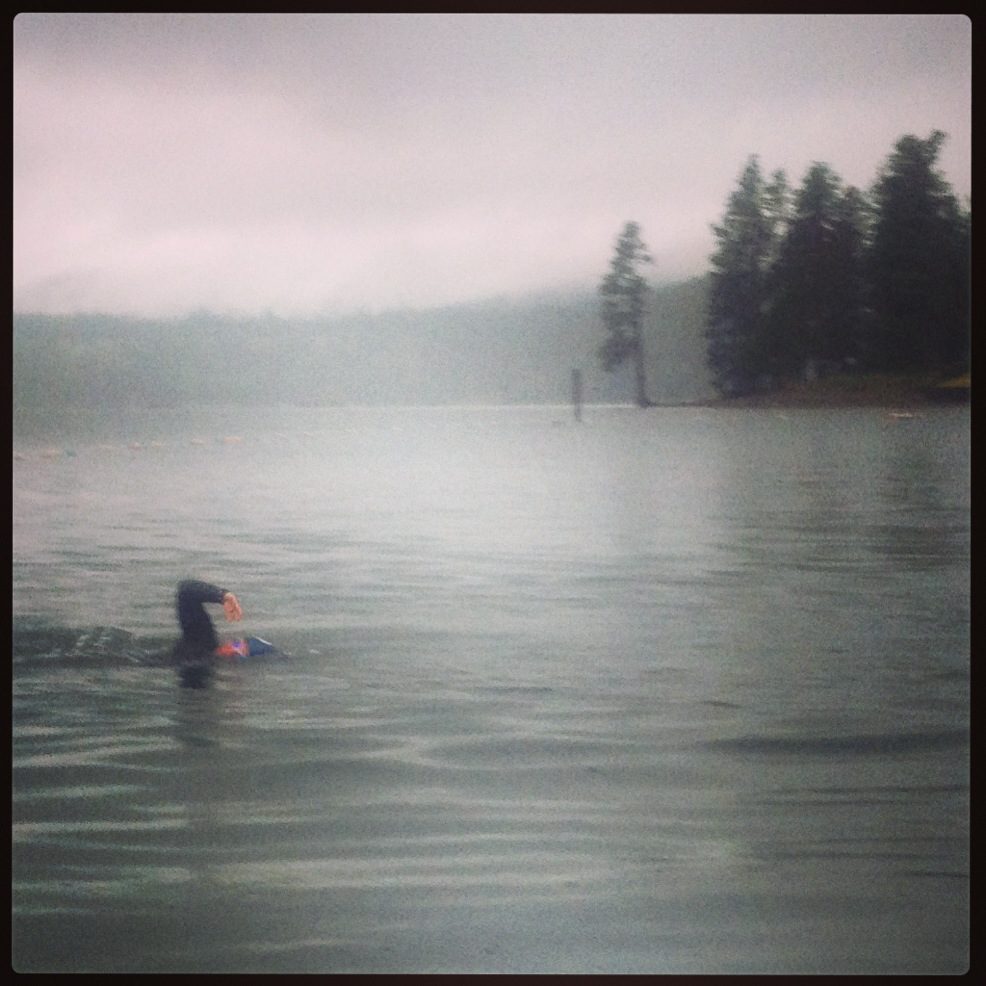
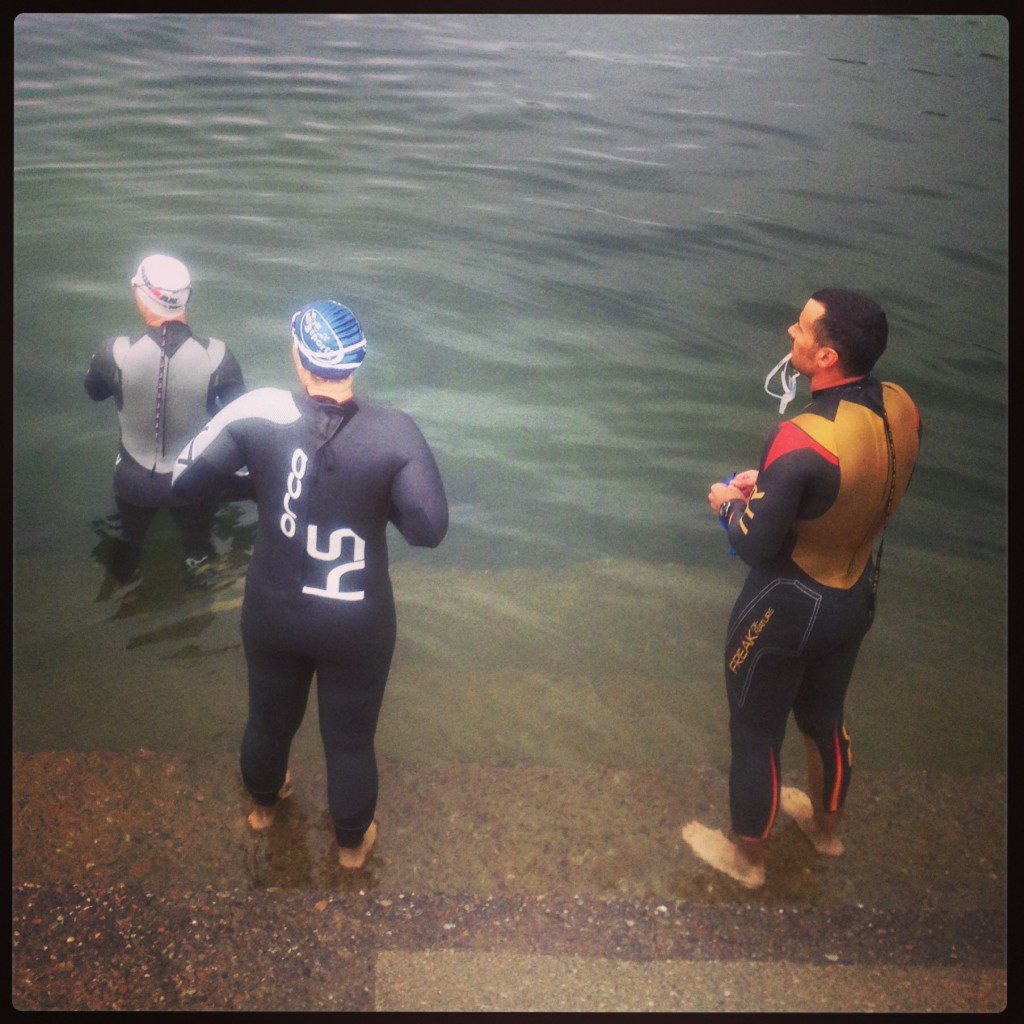
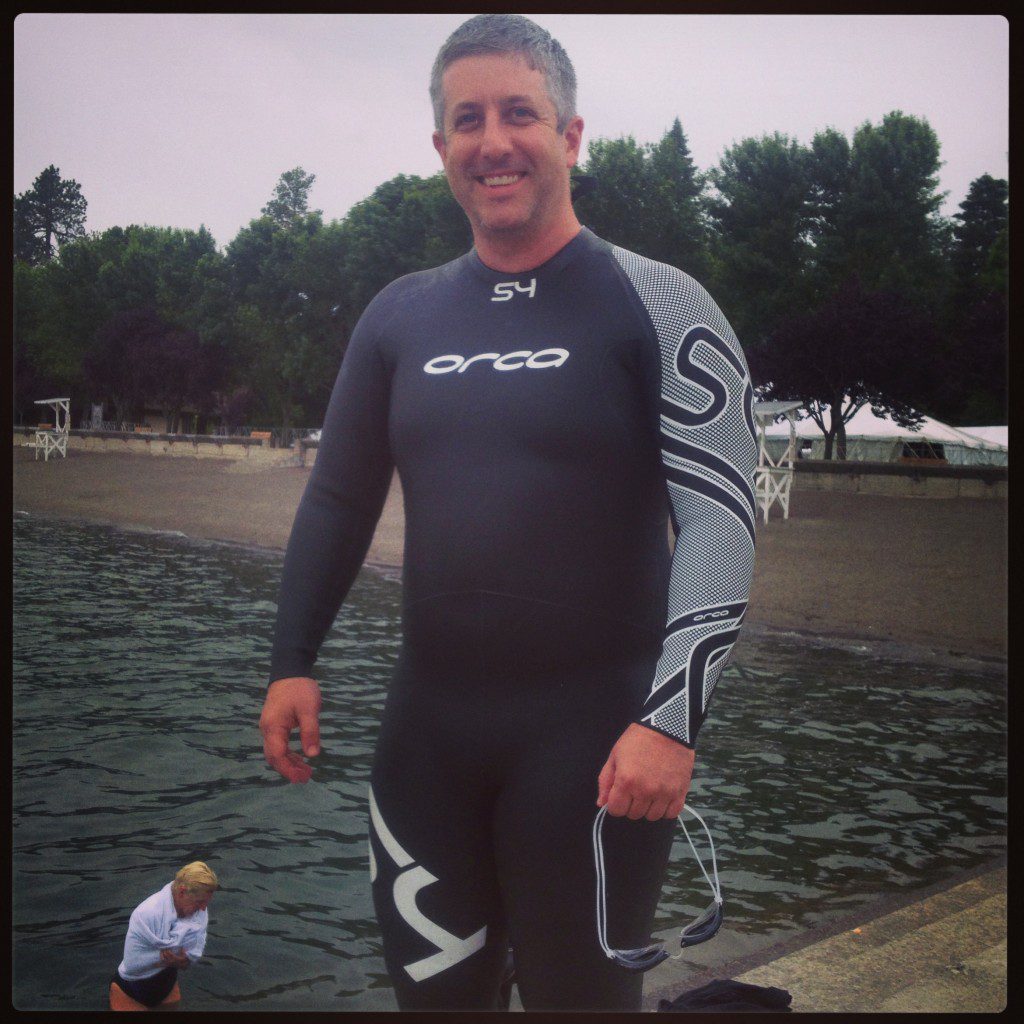


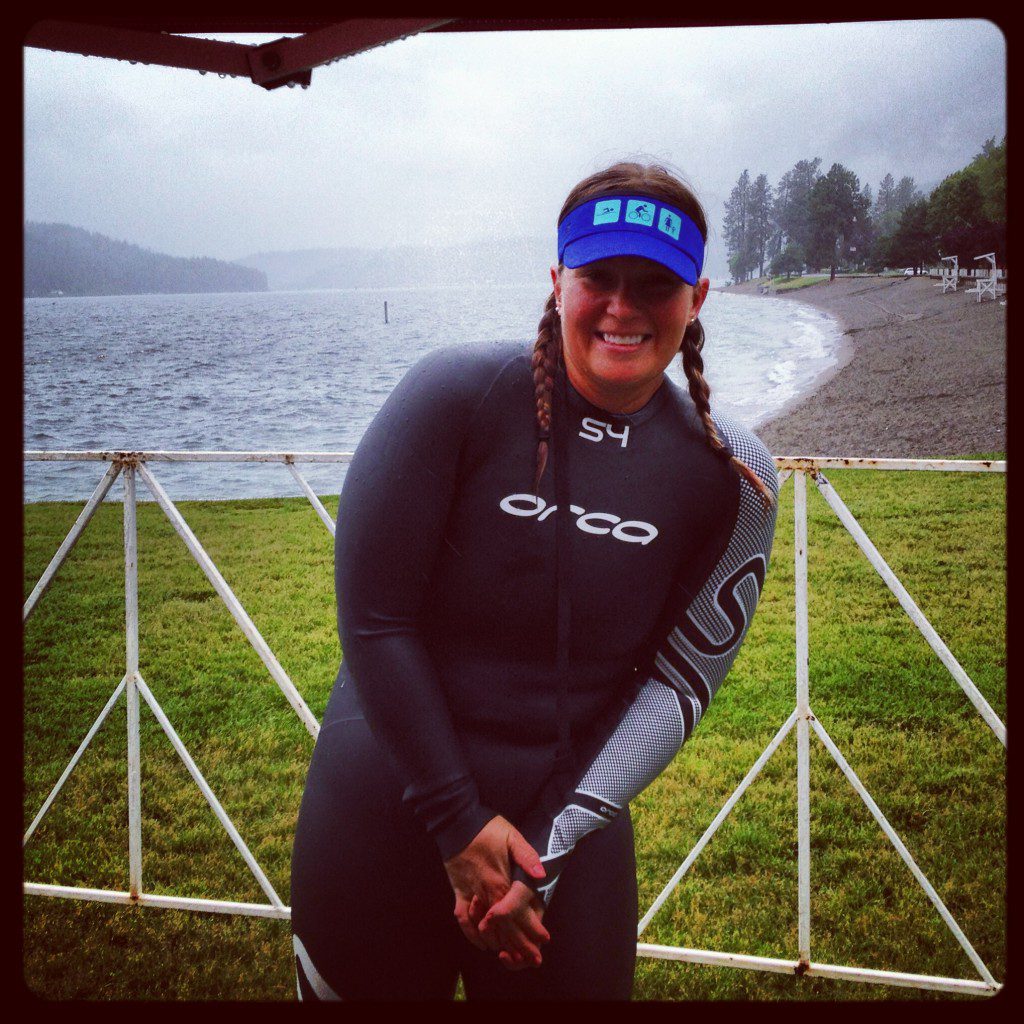
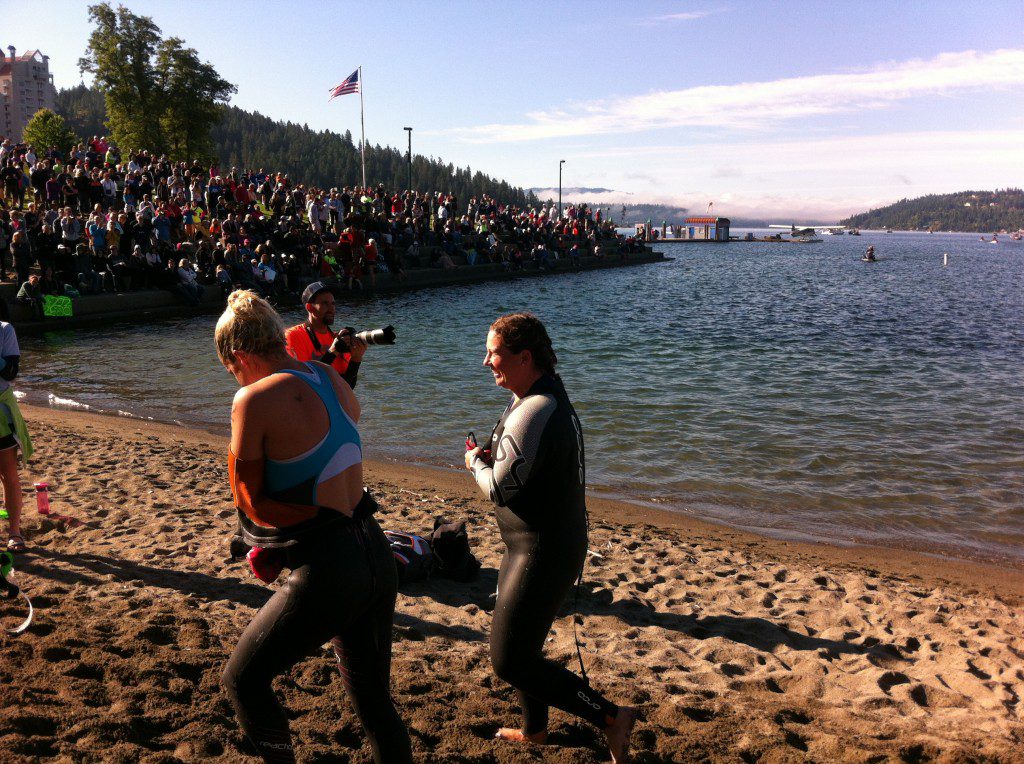

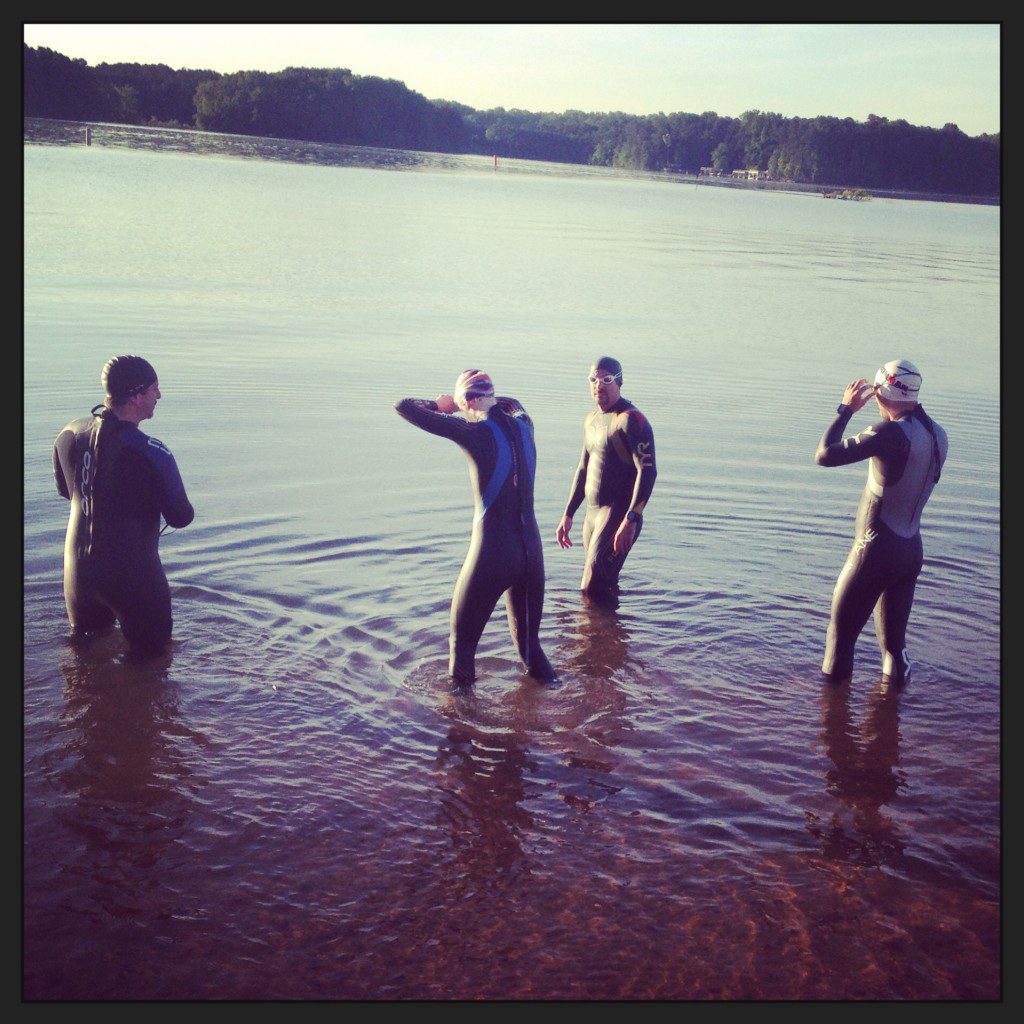
great post!
It took me a year to relax in open ocean swims. I do not think I would ever want to swim in a lake, so my triathlon experience has been limited to home base, Hawaii. Just wrote about a scare last Saturday’s Chun’s Reef to Waimea Bay in the third Oahu North Shore Swim Series. Let’s say I felt like bait. If you don’t mind: http://lavagal.net/2013/07/22/the-flutter/
Open water sure can be very intimidating the first time around. I do agree with all your points, especially with the one where you need a partner in your OWS. Companions should help a lot when you’re in trouble in the water.
i just started OWS training about 2 months ago in preparation for my first tri in August and the thing that helped me from freaking out was the safety buoy that the lake swim people provided me with for the first few swims.
http://www.kiefer.com/kiefer-safer-swimmer-buoy-products-279.php?page_id=256&gclid=CJDehNPPyLgCFSho7AodqxEAsg
this was my security blanket, my set of training wheels. it didn’t slow me down or help me go faster, it just provided me with the peace of mind knowing that, should i freak out, i could grab on and float for a minute or two to regroup. this was especially helpful since i was swimming in a tri suit, not a wet suit, so i couldn’t just flip over onto my back and rest.
thanks for this post and all the others! super helpful!
I’m a noob. Is swimming in a lake/ocean different than at an outdoor pool wave-wise?
Thankyou for this. My first OWS tri is next weekend in acworth. I did two OWS twenty years ago. But I’m older and more nervous now. I’ve been to a lake to practice twice and will go again twice next week. I wonder– if I take a Xanax ahead of time– will it relax my swim or relax the entire race lol.
RT @SwimBikeMom: Here it is! The Open Water Swim post! http://t.co/5A0EGd2egQ #triathlon #openwater #justkeepmovingforward #swim #getovert…
Very, very very… yes. So you need to get in the OW to feel it out.
Great post, however, do you have any advice for the OWS for a beach (getting in and out of the waves)?
Thanks for the post. I’m always amazed how many women I talk to at the swim start at a triathlon who say this is there first time in open water (or in a wetsuit). Like you, I want to scream. I swim without a wetsuit here in the Northwest, but that’s from years of surfing without one. Lots of good tips!
See you there Debbie!!
Thanks for sharing! I am a runner but I am working up to participating in a triathlon by myself (not as part of a relay) thanks to your book and your information is so helpful. Really, it is like you live in my head since I have the same thoughts! You are so honest and funny!
Yep, I was a dummy. I did my first OWS in my first tri ever and basically failed at everything you talked about. I swam off course, I panicked, I was a mess and lost so much time. My rationale was “I can swim, the lake is calm, how hard can it be?” Lordy!
Open Water Swim Fears and Fixes http://t.co/tZn8yYZNP2
Choose your wetsuit size carefully! I tried on my wetsuit before I bought it. I was at the top of the chart by height & weight for my size and it was so tight. So I tried on the next size up and since it seemed to fit better, I bought it. Not good – I lost both weight & inches during my training, plus the wet suit stretched some. So now I have a wet suit that is too big. The salewomen at the shop wasn’t much help – she even told me the suit would not stretch out (which I’ve since read is not so).
Is this buoy allowed in races? I am scared to death of the water!!!
Some races allow them and actually require them. I’ve been in a race in Spain where each of us got a float (without the dry compartment) which was attached with a long rope to your body. I bought mine for the same reason as Evelyn did, but mine came from Europe at http://swimsafetydevice.com . I really do not go anywhere without it. It made me a whole new swimmer. Unfortunately, I do not belong to the 10% alien race :), but I am getting better with my fear of the deep blue.
Okay, I have a comment that I have not found answered yet!!!
I am an extremely strong swimmer. I’ve played and swum around in open water my whole life too so I know to have respect for open water and to be careful at all costs. I also put down crazy laps with my tri club every week.
However… all this aside. I get in the open water at the local reservoir to do some serious swimming (first time in the wetsuit and everything), and putting my face down in the water freaks me the hell out. Not because it’s cold (I live in CO), but because it is bottomless, murkyish, and I can see nothing when I leave the visible ledge. Just thinking about it gives me chills. I think it might be related to my fear of heights or something. So I just sort of forced myself to get over it and I put the practice in (helped that I had a buddy and we weren’t swimming to the far buoy) but it really bugs me (especially because that far buoy is a part of my first tri course)!! Any advice other than to just muscle through??
I found this post while preparing for my first cold water (55-58*) OWS for a half ironman relay and I just wanted to say that this is solid advice. Nice work.
Also, I am one of those aliens you discuss above. Grew up swimming in open water, playing water polo, swim team, etc., and when I did my first tri and said “the swim part? that’s the easy part,” couldn’t believe how many people looked at me like I had three heads! LOL! Well… now I get it. This cold water thing is freaking me out!
Great article! I’m doing my third triathlon and the thought of getting in the cold ocean terrifies me. I’ll try not to panic and keep calm. Thanks!
I had a FULL blown panic attack during the swim of my first tri last weekend. I had done 3 OWS before this. Panicked on the second one of them too but was able to calm myself and get moving. During my race there was no calming me – had to swim with my head above water the entire time. I was so freaking mad when I was done.
I’m currently overcoming the same thing. There’s this threshold in the pond I swim in that I refer to as “the black.” I skirt the black as I swim along the edge. I’m just waiting for something to come out of it, though logically there’s nothing that would or could do me harm down there.
Our minds are wired for metaphor. My personality is such that I like knowing what is ahead of me. I like to feel in control of my life. That black abyss challenges that, forces me to succumb to the reality that I don’t always know what rests ahead. I like to think swimming through that in the near future will help me become not only a better swimmer, but a better person.
I have swam out into the murk a bit, and the visibility improves as I go down into the drop off. Still, there’s always deeper, darker water in the distance. It represents uncertainty and the unknown.
I’ve been thinking of getting scuba gear and exploring the pond in full (it is said to be only 20 or 30 feet deep at the center). But I wonder how I will feel swimming in larger open bodies of water in the future.
I am doing my first half Ironman in 3 weeks. I am a strong swimmer (in a pool) my husband and I went out for our first OWS in Oceanside where the race will be and I had a massive panic attack. I couldn’t get through the break. The waves scared me to death. I’ve never experienced this type of fear. It paralyzed me! I was feeling so defeated and embarrassed. I now heavily regret not getting out there waaaaay sooner. But life kept us from going sooner. I went to a closer beach the next day and was able to get past the break 2 times and panicked on my 3rd attempt. I have maybe 2 more times I can go in between work and stormy weather. I never knew I had this fear! Any other advice or encouragement would be appreciated. Right now I’m consumed by anxiety. I’ve trained so hard for 6 months and sacrificed so much to do this. I have to!! Please help.